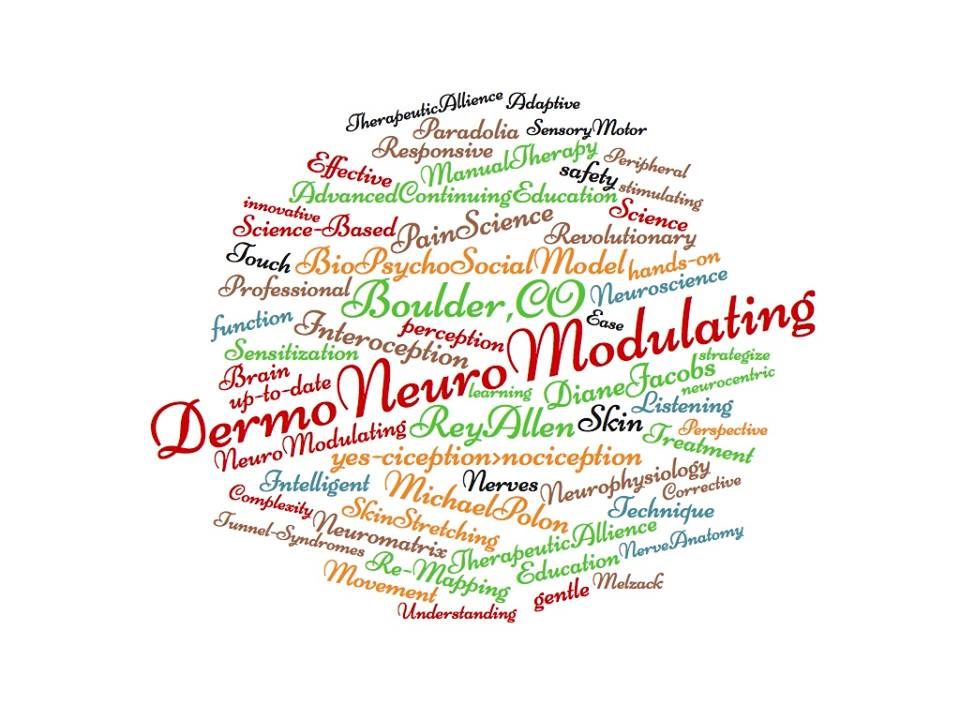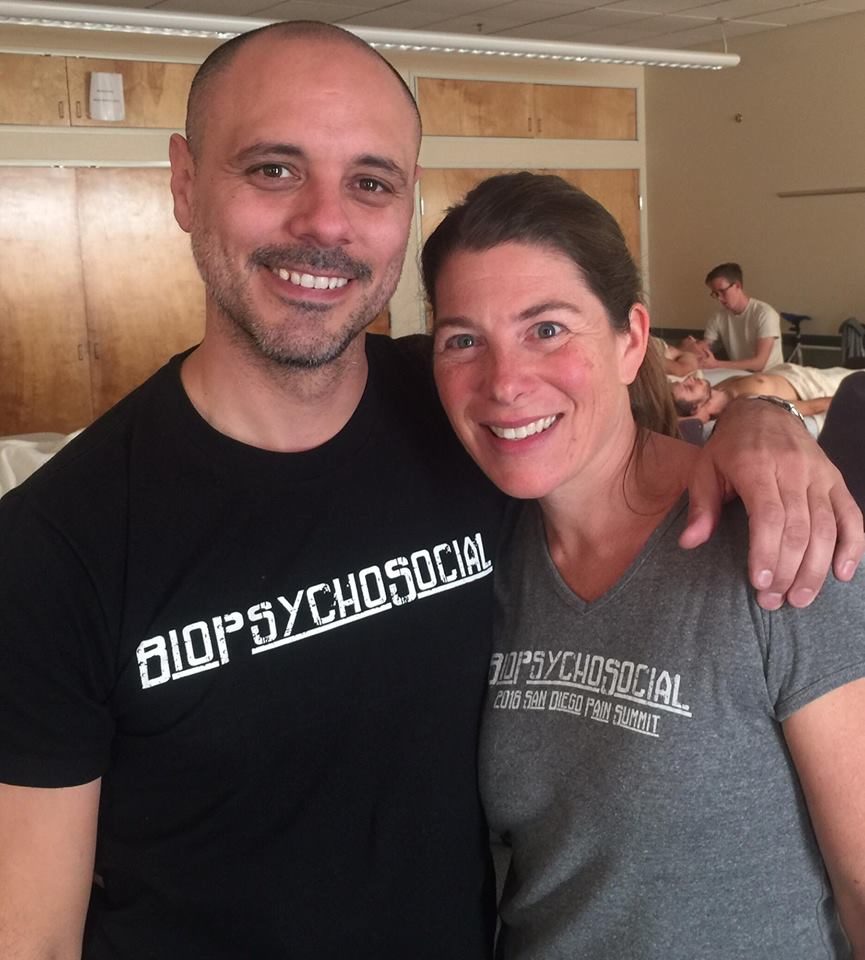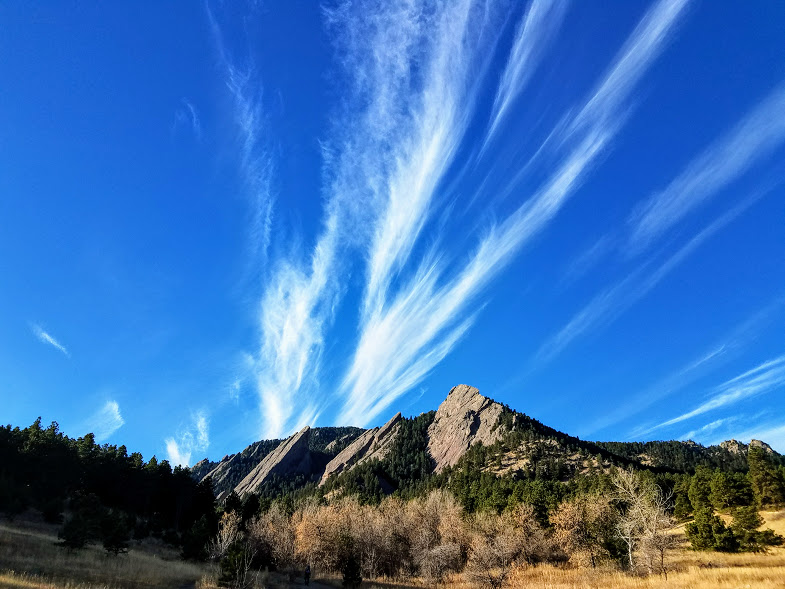I attended Rey Allen’s course on DermoNeuroModulating (DNM) in Boulder, Colorado last month and have been processing all that I learned and experienced there, with much more processing to do. But while it’s still fresh I want to share some of my initial thoughts and impressions.
I’ll start with that I highly recommend the course. It was thought-provoking, engaging, interactive, and informative. One learns not only about the material presented and the model and techniques of DNM but also about one’s self and other humans.
Also, Rey was a wonderful lead. He is passionate about the material and honest about his own path of cognitive dissonance and challenging his beliefs and biases as he learned more about pain science and neuroanatomy.
I want to add that I am not a manual therapist, so my take on the course comes from a bit of an outsider’s perspective. I am not beholden to any prior learned techniques, although I’ve been the recipient of many, and I went into it without expectations. I come from a movement background, having been a fitness trainer for some time with my old fire department and having my MS in kinesiology (which was called human movement when I attended grad school).
The first day of the course was all lecture to really lay the foundation for the framework underlying the techniques we were to learn and practice over the following three days.We went over the evolution of the nervous system first, followed by touch science, a bit of neuroanatomy, and finally pain science to bring it all together.
The Science of Touch
The touch science portion, coupled with the evolution and anatomy of the nervous system, is such invaluable information, and it’s far too often overlooked or unacknowledged. Touch is a powerful way of engaging with other humans, it has been a way of communicating with one another, and with other species (think pets), for thousands of years.
Touch has been studied in developmental psychology for years, the most famous studies of which are the controversial Harlow’s monkeys experiments where monkeys chose cloth surrogate mothers who provided no food nourishment to wire surrogate mothers who did.
There have been numerous case studies and research experiments done over the decades that demonstrate the importance of touch in early development, both in humans and in animals, and more current research and hypotheses on the role the lack of touch may play in things like addiction and illness.
There has also been considerable research on touch in primates as it relates to social hierarchies, group dynamics, and individual and community health. Touch is important to human interactions, too, with research that shows that wait staff who touch their customers get better tips than those who don’t, amongst other interesting bits. Touch science could be a course in and of itself.
The take home: touch is important! It is a means of communicating with one another and can therefore be a means of learning and change. This is where the importance of touch converges with the importance of understanding neuroanatomy and physiology.
Touch is biopsychosocial, too
Before I jump into the interestingness of the biology of touch, I want to emphasize that touch is a biopsychosocial (BPS experience, as all of our experiences are, and never happens bereft of psychological and sociological context, as has been demonstrated in the research mentioned above.
It is the BPS nature of touch that makes it a powerful means of interacting with another human we are trying to help (or animal for that matter!). There are elements of trust, connection, and safety that can be communicated through appropriate touch, that when combined with words and with movement can provide a very rich, engaged learning experience for an individual. I’ll touch upon more of that later.
The anatomy of touch, so-to-speak, is what I’ll touch upon here, however. Whenever we are touched or we touch, we always do so through the skin. (Well, unless we’re touching eyeballs or hair or fingernails, but you know what I mean.) The skin is rich in nerve endings, particularly free nerve endings, which provide a direct link to the spinal cord and the brain. In fact, most of our free nerve endings (80%, I believe) end in the skin. What a powerful and simple way of getting the brain some information, eh?
The physiology of sensation is really cool, though
This post is not the appropriate place to go over all of the anatomy and physiology of what is going on in the layers of the skin, but Michael Polon did an excellent job in the course (so take the course!) doing so and Diane Jacob’s new textbook (just recently released! So buy the book!) will give you a much more thorough education in the peripheral nerves, particularly the cutaneous nerves, than I ever could.
I will say, though, that I have had anatomy twice at the graduate level, in a neuroscience PhD program in the late 90’s and a kinesiology MS program in 2013. As a result I have dissected multiple cadavers, and never, not in either anatomy course, have I learned as much about the peripheral nervous system, particularly the cutaneous nerves, the skin, and the relationship of the skin to the underlying structures as I did through the DNM text and the course.
For the purposes of this post, however, I’ll simply summarize by saying touch is an accessible mechanism through which we can interact with and influence and facilitate change in the nervous system, both ours and others (the toucher is just as affected as the touchee), which leads us to the next educational piece of the course, pain science.
The Science of Pain
Rey succinctly and thoroughly went over how it is now understood, through nearly three decades of pain science research, that the experience of pain is an emergent, conscious experience uniquely perceived by each individual.
The experience of pain is essentially the result of the brain’s determination that we are in need of protection from perceived threats (I am simplifying with a sort of dualistic notion of ‘brain’ as though it’s separate and set apart. It’s not, the brain never acts independent of all our other bits, I just don’t have a better way of saying it yet. If you do, please share!). It/we have predicted that we are in danger based on current information, past experiences, things we’ve learned and think we know, things we think will happen, our physiological state, our emotions, our stress levels, our beliefs, our expectations…it’s not one thing and there’s no linear progression.
So we know these threats come from interrelated and interdependent biological, psychological, and sociological factors. When threats are perceived and the need to protect is decided by the brain/us, pain is experienced. Mind you, the perception/determining part is not happening within our conscious awareness, it is the emergent output of pain that we are conscious of, that we experience. (Same goes for our reality, mind you. Probably.)
Sometimes we experience pain when there’s no need for protection. A lot of times when that happens there have been changes in the nervous system and brain that have taken place that facilitate the experience of pain. But the cool thing is that we can consciously influence our nervous system, including our brain. We do it all the time, it happens every time we learn a new skill or interact with another human.
Touch Therapy and Changing the Experience of Pain
Touch is one such way to influence the nervous system, to influence the whole biopsychosocial nature of us (it influences our thoughts, focus, emotions, and all sorts of other stuff, too), and facilitate change or modulation through the provision of novel information within a calming, therapeutic context.
Keep in mind that context is incredibly important and too often overlooked. It sets the stage for what can happen and none of our human experiences, including that of pain, ever happens bereft of context.
The novel information provided by touch can contribute to a perceived sense of care or safety, light up the maps in our sensory cortex and associated neurotags, guide our attention and awareness, and otherwise lead to a cascade of changes in our human systems that can then change our perceptions and our experience.
The DermoNeuroModulating technique
It was made very clear in the course that it is the neuroimmune system is doing the heavy lifting here when change happens. When there’s a reduction in tension or pain or discomfort. It’s not magic, we are not creating change in another person with our hands, we are not molding tissues or realigning joints, rather we are creating an environment for change to take place through touch and context. We are facilitators, not magicians, not mechanics.
I have to admit that when we got into the technique part of the class I didn’t know what to expect and I was a bit nervous. I’m a movement person, not a manual therapy person, but the techniques were so accessible, even for a novice like me, and I was quickly put at ease.
I went in with an exploratory, curious, open mind and came out blown away by an intense experience that happened as a result of some work Rey did on my hips. It showed me the aptness of this technique for people in pain (I have lived with persistent pain since January 2010). This coming from someone who has had every sort of manual therapy done to me, from PT to massage to acupuncture to chiro to posture and movement based therapies, and some I’m sure I’m forgetting.
DNM was different
How? I think that context is crucial, and the notion going in that this is a technique to facilitate change in the nervous system, not to change tissues. It is slow and allows for the nervous system to take in and assimilate this new information so it can start modulating or making changes.
I think it was successful for me for a multitude of reasons, including the sustained touch, the sense of safety I felt, trust in the person touching me, being allowed to be patient and not feeling rushed for something to happen, the lighting up of the sensory cortex, the body awareness that I realized I have been lacking for nearly 7 years when it comes to my hips, the lack of self-consciousness, the ease and comfort.
I’m sure I’m missing a whole lot but you get the idea. When I say I had an intense experience it wasn’t during the session(s) that I mean, it happened after Rey worked on my hips using the DNM technique with the underlying principles and science in mind. By intense I mean in a hitching, uncontrollable, totally unexpected sobs sort of intense.
My DNM experience
The words I said aloud, between sobs, were ‘I don’t feel like I have to hold myself up’. It was profound. And it brought an awareness to something I didn’t realize about myself despite all that ‘I know’ about pain science and the lived experience of pain (it’s all I study and write about, for goodness sake!). I realized that I move through the world constantly trying to hold myself up and out of my hips, probably because they’ve been painful for so long.
I felt a progression over the course of the workshop. On the first day I became aware that it felt like I was wearing a steel girdle around my hips, ostensibly protecting them from all that pain. I was incredibly guarded and restricted in my hip movement (and have been so for years). On the second day it felt more like a leather girdle, there was a little more play in there but it was still tense, drawn in, protected/protective.
But after Rey worked on me the 3rd day, the girdle wasn’t there when I sat up. I felt my hips, truly felt them, truly aware of them without just being aware of pain for the first time in nearly 7 years. And I was able to take that awareness with me, I can use that awareness now to monitor my girdle, to try to change it when I notice it’s tightening up, protecting me. (who knows if any of this makes sense).
Subtle can be powerful
I’m not ‘fixed’, mind you, but I am changed, and that’s important. My pain, particularly, has changed significantly. Even through a pretty gnarly bout of anxiety last month, after the course, my pain was largely unaffected. That’s huge progress for me. And I’m aware of my hips now, truly aware of them and not just the pain within them. I’m able to think about and conceptualize them differently. That’s no small thing, even though it may seem subtle.
That subtle shift has been enormous when it comes to how I plan on moving forward from here, both literally and figuratively.
That facilitated change that can occur as a result of DNM affects the whole person, not just our our peripheral nerves and our skin. It affects our physiology, our psychology, our muscle tension, our sense of safety vs danger, our body awareness, our emotions…everything, the whole of us. That’s why it works at all. It seems plausible that those are the reasons why any manual therapy works at all.
Keep learning
So, yeah. I recommend the course. If for nothing else than to get you thinking differently about what happens during manual therapy, whether you are a provider or a receiver.
Knowledge is power, and that’s what the DNM course was really about, learning more about the human body as well as about the human experience and human interaction. Part of that learning is also about keeping an open mind and remaining flexible and adaptable as new information comes in, to continue to challenge our beliefs and our biases, and to keep learning.
Learning never stops.
Boulder, Colorado
Thanks for reading the post, folks! For more learning and engaging opportunities, check out the Facebook pages for Explaining Pain Science and DermoNeuroModulating. For upcoming courses and more on Diane Jacobs, check out DermoNeuroModulation.com. For more about Rey’s upcoming and previous DNM courses, go to ReyAllen.com



5 Responses to "DermoNeuroModulating course review"